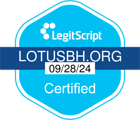Heroin Addiction
What is Heroin?
Heroin is an illegal, highly addictive drug processed from morphine. Pure heroin is a white powder with a bitter taste that predominantly originates in South America. Pure heroin can be snorted or smoked and may be more appealing to someone who has never used heroin because it eliminates the fear associated with injection or needles.
“Black tar” heroin is sticky like tar or hard like coal and is primarily produced in Mexico and marketed in the United States. The dark color comes from crude processing methods that leave behind impurities. Impure heroin is usually dissolved, diluted and injected into veins or muscles.
What is Heroin Made Of?
Heroin is an opioid drug made from morphine. Morphine is a natural substance taken from the seeds of various opium poppy plants grown in Southeast and Southwest Asia, Mexico and Colombia. Dealers may also mix other substances into the heroin to increase the weight to profit financially. These added substances may be sugar, powdered milk or baking soda.
What Does Heroin Look Like?
Heroin is typically seen as a white or brownish powder with the texture of sugar, starch or powdered milk. Heroin can also be a black sticky substance known as black tar heroin.
Is Heroin Addictive?
Heroin is highly addictive. People who regularly use heroin often develop a tolerance, which means that they need larger amounts or more frequent doses of the drug to get the desired effects. A substance use disorder may develop causing issues, like health problems and failure to meet responsibilities at work, school or home.
People who are addicted to heroin and stop using the drug abruptly may suffer severe withdrawal symptoms including.
- Restlessness
- Muscle and bone pain
- Sleep problems
- Diarrhea and vomiting
- Cold flashes with goosebumps and shivering
- Muscle spasms
- Severe cravings for heroin
Studies have shown some loss of the brain’s white matter associated with heroin use, which may affect decision-making, behavior control, and responses to stressful situations.
Get the Care You Need
Let us help you.
Signs of Heroin Abuse
The signs of heroin use can vary among people based on genetic makeup, the amount of the drug used, the frequency of use and the dependency on the drug. There are several signs of heroin use with varying identifiers including psychological, physical and behavioral signs.
Psychological signs and symptoms include:
- Depression
- Euphoria
- Mood swings
- Anxiety and paranoia
- Hostility toward others
- Irritability
- Delusions
- Disorientation
- Hallucinations
Behavioral signs and symptoms include:
- Avoiding loved ones
- Decreased personal hygiene
- Periods of hyperactivity followed by exhaustion
- Increased sleeping
- Apathy and lack of motivation
- Slurred, garbled speech
- Wearing long pants and shirts, even in warm weather
- Forced speech
Physical signs and symptoms:
- Track marks on arms and legs
- Constantly running nose
- Shortness of breath
- Nausea, vomiting and weight loss
- Frequent respiratory infections
- Dry mouth
- Warm, flushed skin
- Extreme itching
- Scabs or bruises (the result of picking at the skin)
Heroin Abuse and Addiction in Orlando
Once addiction develops, someone’s life can take a dangerous turn. There are thousands of treatment centers in the country, but not every rehab option fits each person’s specific needs. When looking for help, find a center that offers treatment for heroin addiction and values patient comfort. Finding a center that treats addiction for other drugs and co-occurring mental health disorders is also important.
LOTUS offers heroin addiction treatment programs in addition to the staff and resources necessary to treat addiction. Treatment providers work with patients to reduce or eliminate dosage while addressing co-occurring disorders and physical and psychological symptoms.
Heroin Abuse Facts and Statistics in Florida
In 2016, approximately 15,500 people died from drug overdoses involving heroin in the United States. Heroin-related overdose deaths increased 20 percent from 2015 to 2016. Opiates, especially heroin, contribute to 18 percent of treatment center admissions in the United States.
Learn about other addictions

Contact us
Send us a message to get started and we will get back to you in the next 24 hours.
Our passionate counselors work with you to bring balance where needed
9:00am – 5:00pm
.webp)
Contact Us
Recovery starts today
We are available 24/7 to assist scheduling your teen's assessment





